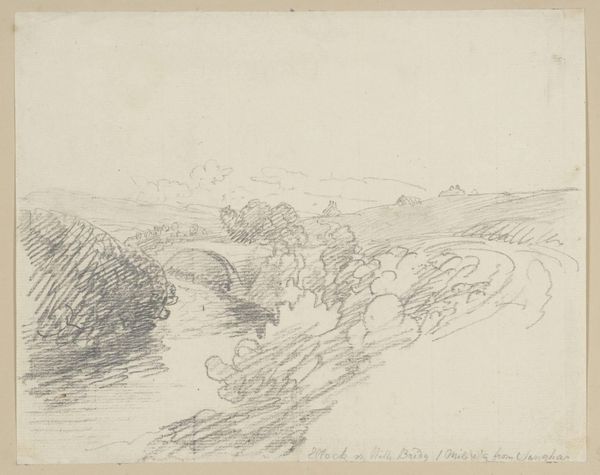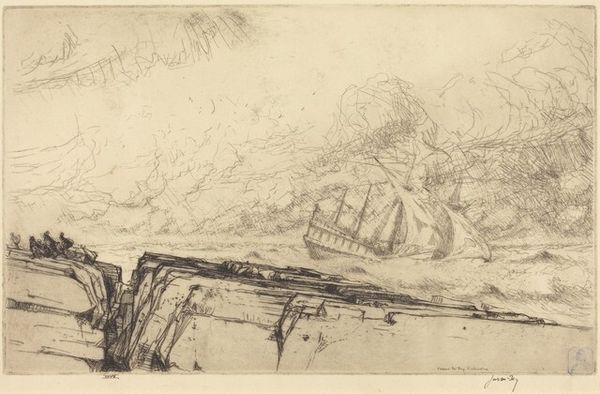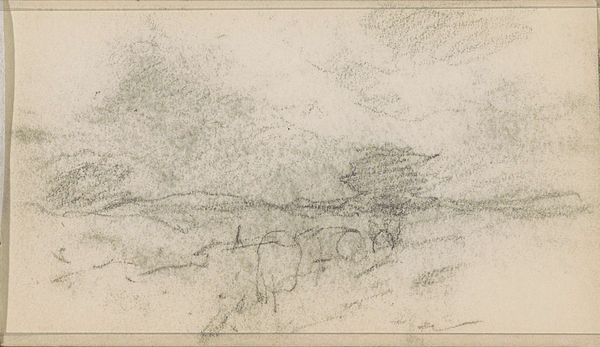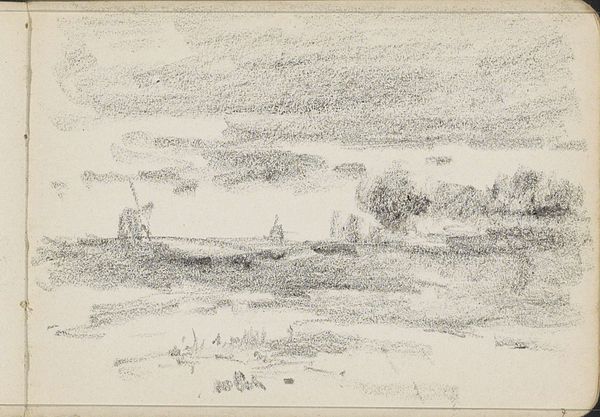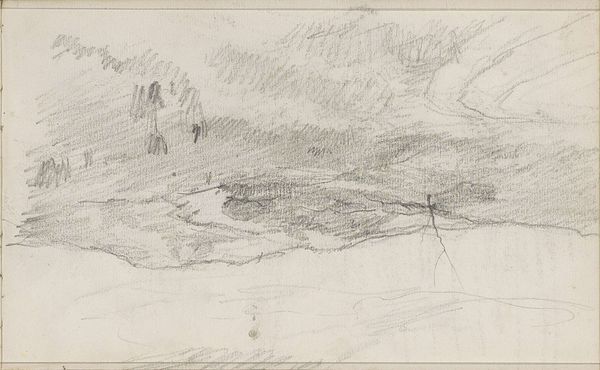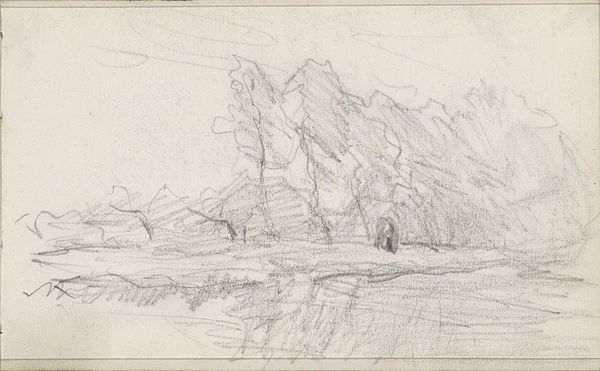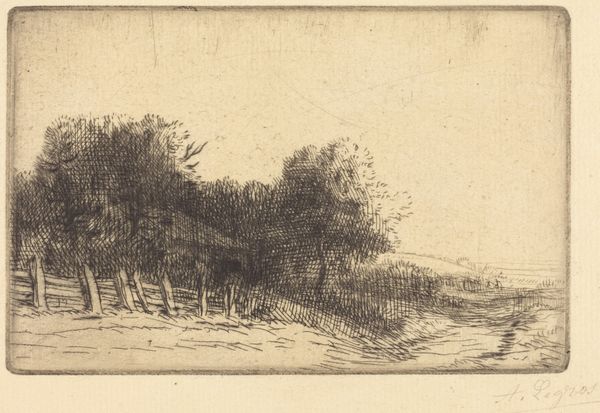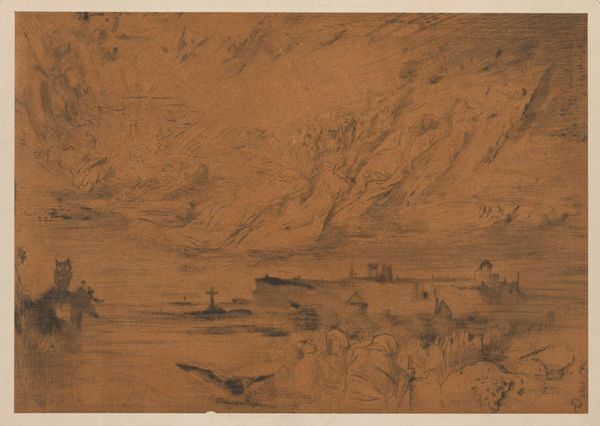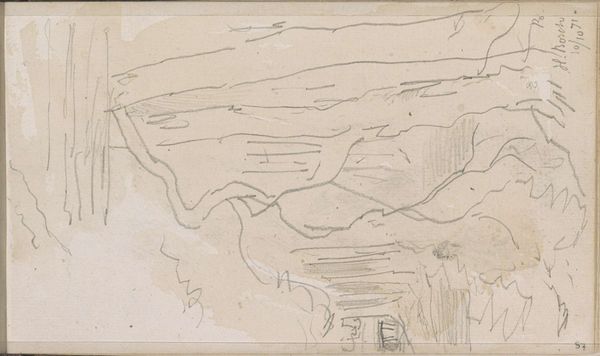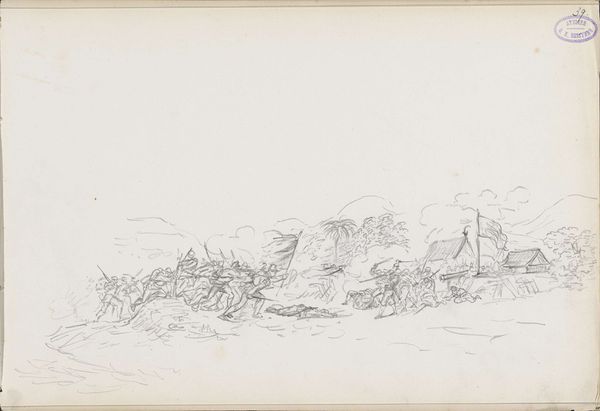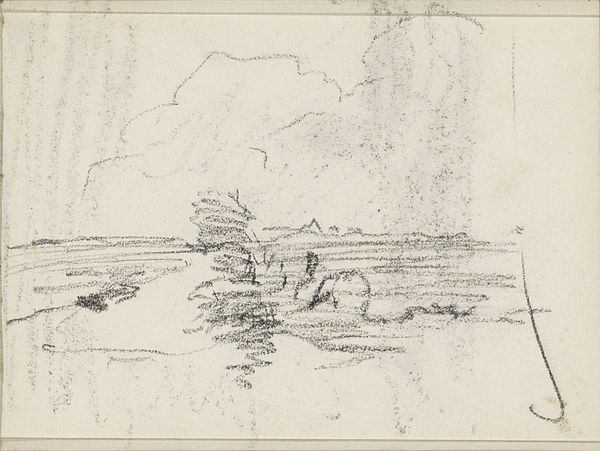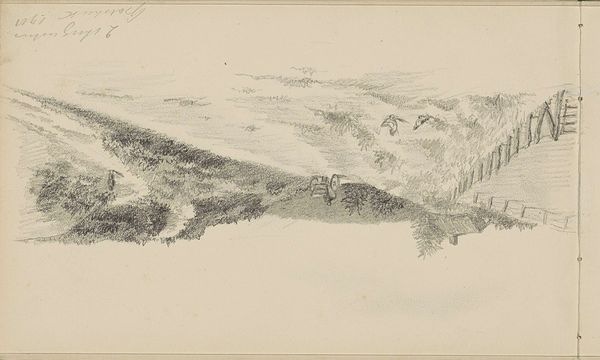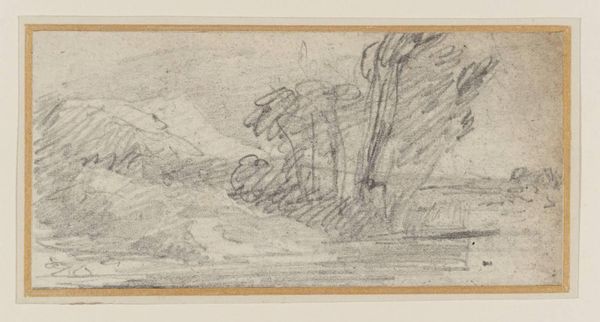
Copyright: National Gallery of Art: CC0 1.0
Curator: This is "April in Kent," an etching crafted by James McBey in 1912. It offers a sweeping view of the English countryside. Editor: Immediately striking! The texture and light create a palpable sense of movement, the landscape seems almost to breathe. Curator: McBey masterfully uses line to capture the nuances of the scene. Kent, at this time, was a region experiencing the pressures of agricultural reform. It became the setting for literary works examining labor laws and challenges that disproportionately affected women working in agricultural sectors. McBey may be alluding to it with the depiction of toiling field-hands, set far-off into the work’s middle ground. Editor: True, yet there is an intrinsic formalism, don't you agree? Look at how the etched lines create depth and atmospheric perspective, how your eyes travel towards the two lone windmills punctuating the horizon. The composition’s vertical orientation emphasizes the landscape's vastness; the density of marks creates tonal variation, all done with the formal etching process, rendering visible both artist and pastoral scene. Curator: Absolutely. It is compelling when viewed from the social and historical perspective, thinking about class, landscape and gender dynamics that permeated that era in rural Britain. One also cannot escape the reality that even now these regions continue struggling to reconcile these imbalances which we can all recognize when examining our contemporary moment. Editor: Precisely! We may even understand his artistic and socio-political position by considering the compositional interplay: that foreground field has been labored, or soon will be! This gives a sense of that toil, situating these human agents with their context and conditions of agricultural England. Curator: Thinking about that makes me look again at how the lines above the field morph into tumultuous weather—both are testaments to what it meant to be alive during the shifting dynamics of Edwardian era England. McBey presents the social fabric that, once felt by all, can still resonate throughout our historical landscape. Editor: It certainly makes the technical ingenuity employed palpable in light of broader implications! By calling to light McBey’s composition—landscape as human toil—perhaps others too can find what lies in a deep look at "April in Kent."
Comments
No comments
Be the first to comment and join the conversation on the ultimate creative platform.
